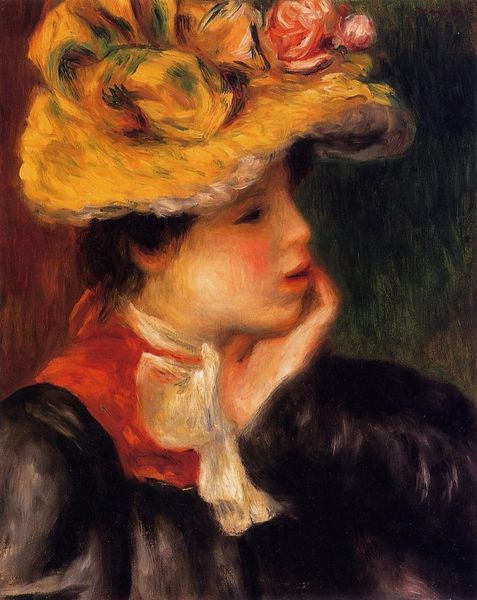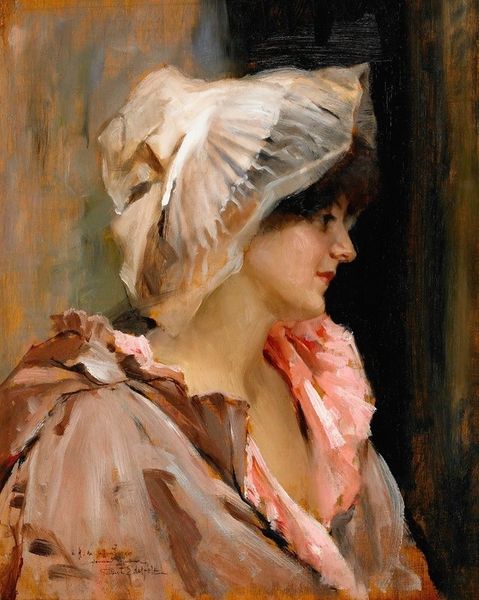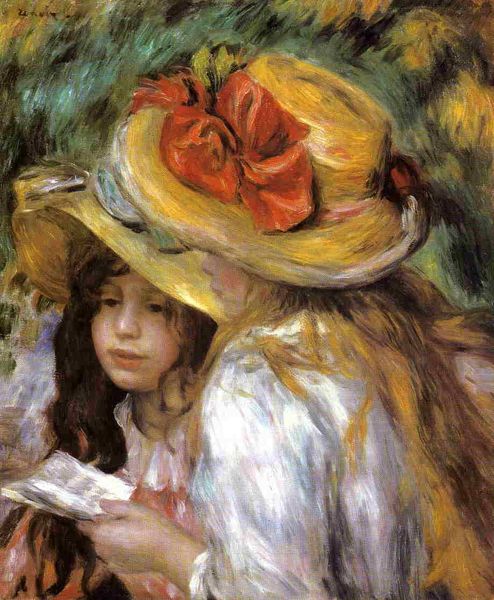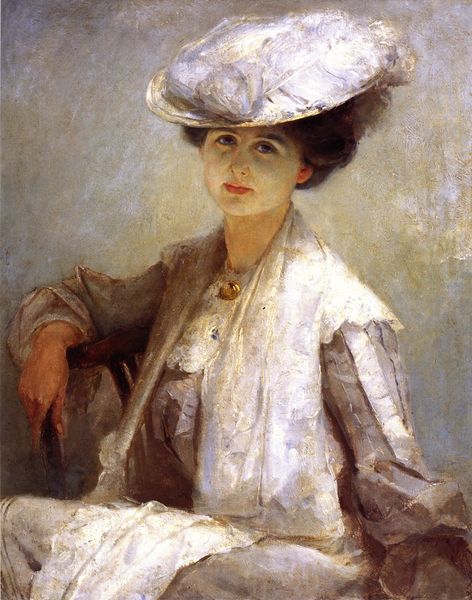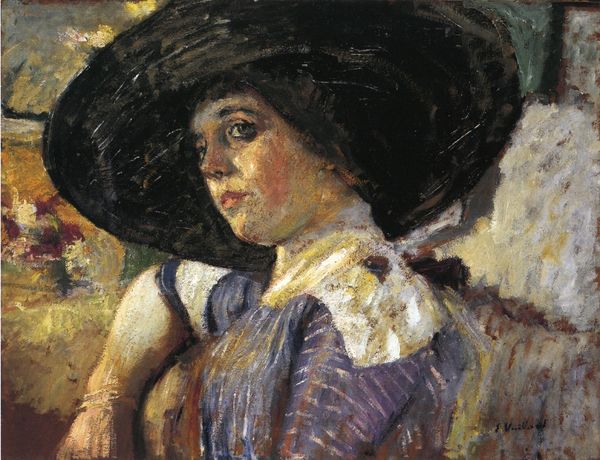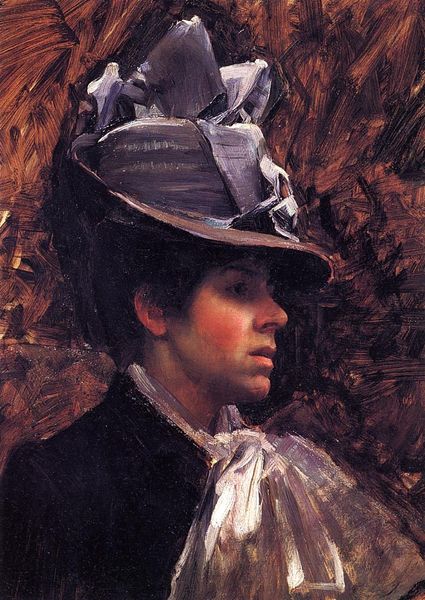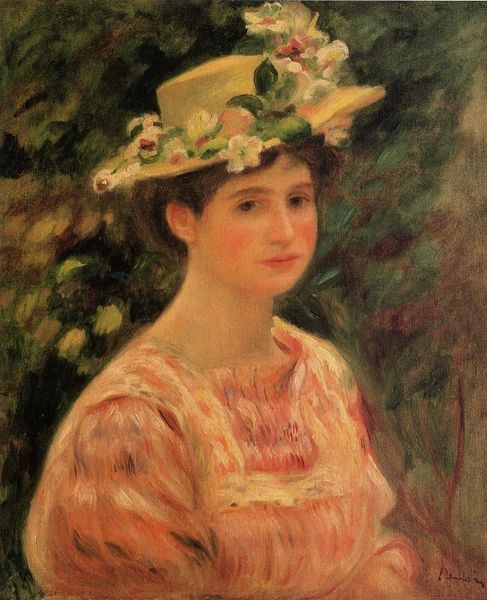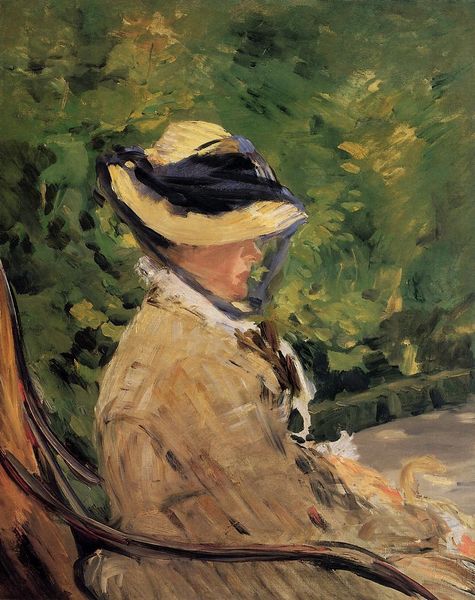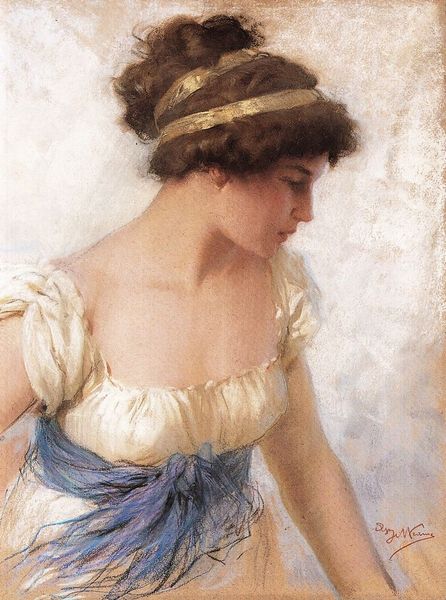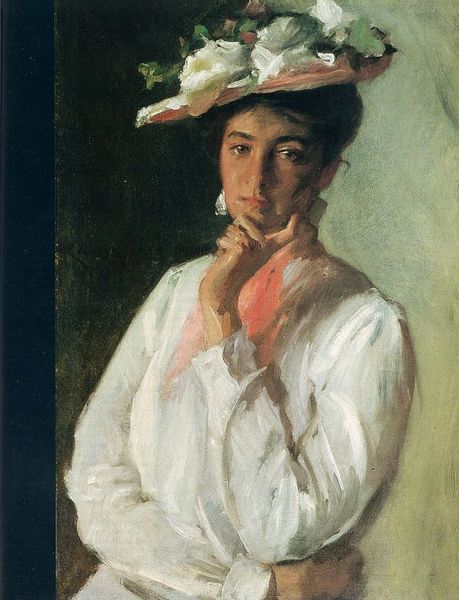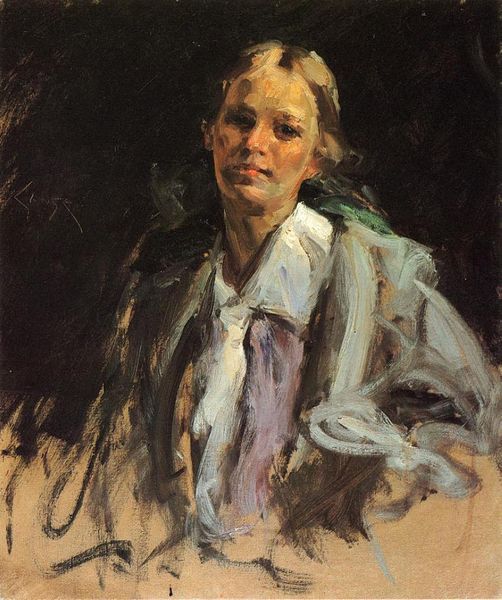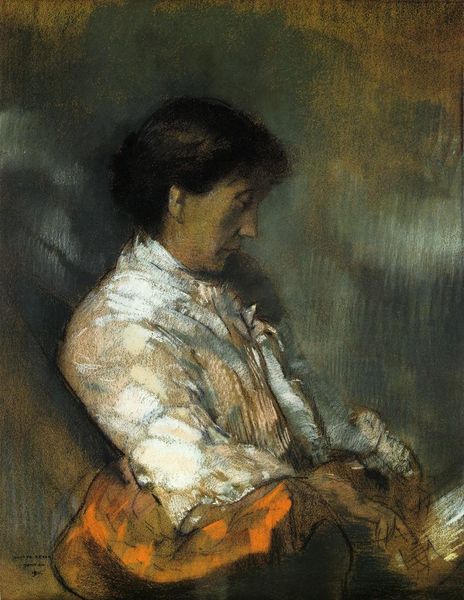
Portrait of Clara Stephens Wearing a Hat with an Orange Ribbon 1913
0:00
0:00
williammerrittchase
Private Collection
Copyright: Public domain
Curator: Here we have William Merritt Chase's "Portrait of Clara Stephens Wearing a Hat with an Orange Ribbon," painted around 1913. What strikes you immediately about this image? Editor: It's captivating! There's a sense of immediacy in the brushstrokes. It feels less like a formal portrait and more like a fleeting impression of a fashionable woman caught in a moment. Curator: Absolutely. And fashion, as we know, is so powerful as a conveyor of cultural expression and social status. Here the vibrant orange ribbon can represent joy but, on another level, also flamboyance and luxury. Hats themselves were particularly evocative. Editor: Speaking of evocative, that hat is practically a statement! But look closer—isn’t the woman’s gaze slightly ambiguous? Almost confrontational, challenging the viewer. I see her questioning societal expectations of women at the dawn of a new era, just before the First World War disrupted so much. Curator: It's interesting you mention challenge. Note how Chase eschews traditional, idealized beauty. Instead, there's a stark realism in her features. He emphasizes her individuality through the symbolism of personal style. This is not the expected portrait of femininity, but an exploration of female identity as perceived during this turning point. Editor: I agree, and it highlights the changing role of women in society. They are not mere muses. Her sharp features suggest intelligence and agency. It's there in that controlled yet penetrating gaze and that confident orange ribbon. Do you feel like we see, in that ribbon, a suggestion that something radical will unfurl, later down the line? Curator: The very existence of such portraits is evidence of shifting narratives around women, in turn also helping shape visual culture. Orange historically, by the way, represented creativity and passion. And with the brushwork, one cannot avoid seeing elements of a painter like John Singer Sargent, perhaps nodding to past conventions while signaling a future through style and a contemporary subject. Editor: It all works in the image: form, color, subject. Looking at this portrait with the passage of time is like witnessing a woman quietly yet decisively stepping into her own power. The symbolism creates a powerful story of transformation. Curator: It becomes more than just an aesthetic experience but a window into cultural transitions.
Comments
No comments
Be the first to comment and join the conversation on the ultimate creative platform.
